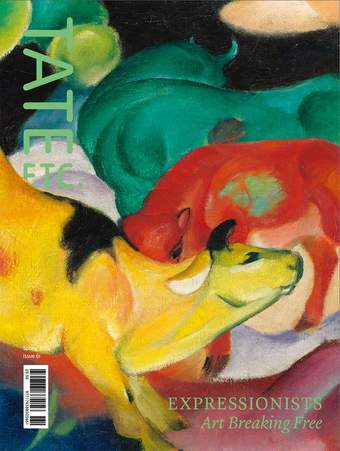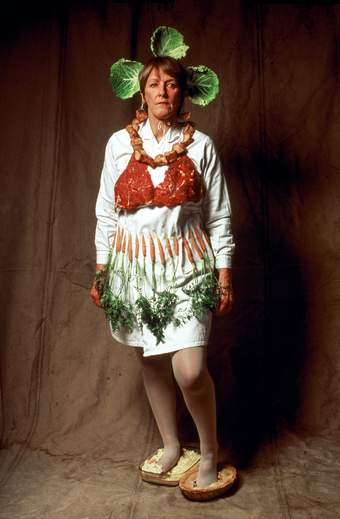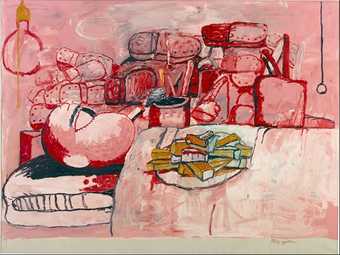
Humphrey Jennings
Swiss Roll
(1939)
Tate
It is important, I think, to never get bored of Swiss rolls. One of our greatest strengths, as humans, is that we make beautiful and useless things that nature could never dream up: marshmallow ropes, bobbing-head figurines, the TV show Gladiators, Swiss rolls. One of our great weaknesses is how quickly we become immune to these, as though they’re no big deal.
This Swiss roll refuses to be relegated to ordinariness. Humphrey Jennings’s joke is compact: a Swiss roll meets an alpine landscape. For the surrealists whose company he kept, art was often a conceptual collage. In Celebes 1921, Max Ernst merged an elephant with a Sudanese cornbin; René Magritte made bodies disappear inside their clothes. Jennings did something similar when he made a synaptic jump from a teatime treat to the Matterhorn peak.
Writer and filmmaker Nora Ephron once wrote that she loved not just waffles but ‘the concept of waffles’. In reality, Swiss rolls are just benign constructions that do well at a Women’s Institute meeting: a thin sponge cake, spread with cream or jam then rolled – against the will of gods and physics – into a baroque little swirl. While these were initially popular among home bakers, during the 1930s Britain embraced industrial food – Swiss rolls produced by J. Lyons & Co. were sold at a rate of 600,000 per week. Jennings was painting through this period, which maybe accounts for why his Swiss roll is so uneasily pristine – tubular, crumb-less, with an Archimedean spiral of cream. The surreality of the cake wasn’t lost on J. Lyons & Co either. In their ‘LOOK FOR LYONS’ slogans, the ‘O’s were all replaced with Swiss roll spirals like a hypnotist’s wheel.
Jennings created one other Swiss roll. In his 1936 Commode with Swiss Roll, the dessert sits on a plate underneath a bow-fronted Louis XV dresser. The cake could have been commissioned by Madame du Barry herself: there are tight red whorls of jam; the cake is plump and superfluous, sagging in the middle, as though it were homemade. This rococo cake is nothing like the alpine one, but it feels just as true. Both have the feeling of a dream, something you had known but never thought about, like seeing the world anew.
Swiss Roll was presented by the Trustees of the Elephant Trust in 1981 and is on display in the gallery Reality and Dreams: 1920–1940, Tate Britain.
Ruby Tandoh is a food and culture writer who lives in London.



